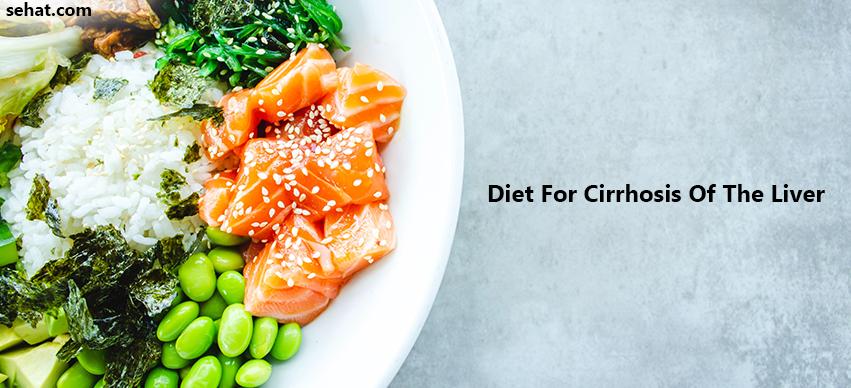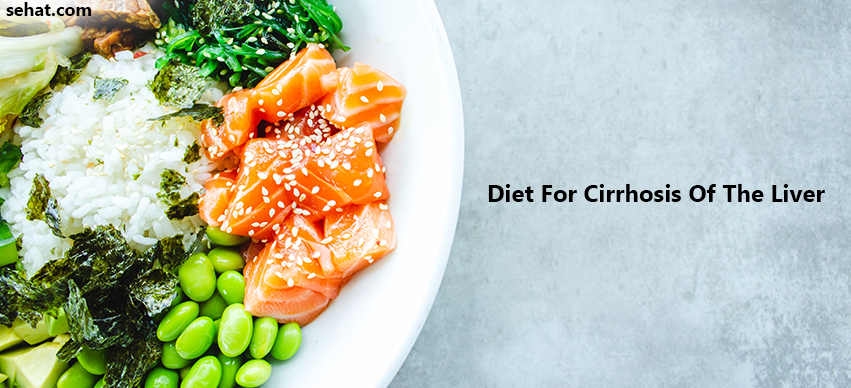
What Is Cirrhosis Of The Liver?
Cirrhosis of the liver also referred to as an end-stage liver disease, is a condition characterized by the loss of liver function. Cirrhosis is caused by long-term permanent damage to the liver wherein the healthy smooth liver tissue is replaced with hard scar tissue. The build-up of scar tissue eventually blocks the flow of blood through the liver and prevents or slows down the liver's function of filtering toxins from your blood, making enzymes that help in digestion, storing sugar and nutrients, and helping to fight infections.
As the disease progresses, there is an increased severity of scarring with the formation of regenerative nodules. These nodules appear as irregular bumps and occur because of the healing response to liver damage. The damage caused is so severe that it cannot be reversed. There is no cure for cirrhosis. Treatment modalities aim to delay or stop the progression of the disease, decreasing further damage, and reducing the related complications. Making lifestyle changes such as avoiding alcohol and following a liver cirrhosis diet can help delay the progression. Know the list of foods to eat and avoid for liver cirrhosis.
[Also Read: Foods to eat for liver health]
Cirrhosis Of The Liver Symptoms
You may not experience any symptoms during the early stages of the illness. But, as the disease gets worse with severe damage to the liver and accumulation of scar tissue, the liver does not function properly, and the following signs and symptoms can occur.
Serious Symptoms
What Causes Cirrhosis Of The Liver?
There are several diseases and conditions that cause damage to the liver leading to cirrhosis. Some causes include;
- Long-term alcohol abuse or alcohol addiction
- Viral infections of the liver such as hepatitis B and hepatitis C infection
- Nonalcoholic Fatty Liver Disease - Fat accumulation in the liver that is not caused by alcohol intake. This condition may be associated with obesity and diabetes.
- Blockage Of Bile Ducts - Bile ducts carry the fluid called bile produced by the liver to the intestines to help in the digestion of fats. Bile ducts can be blocked because of cancer of the bile ducts or pancreas, increasing the risk of cirrhosis.
- Biliary Atresia- A congenital condition where bile ducts do not develop normally
- Cystic Fibrosis - Bile produced by the liver becomes stickier than normal, blocking the small bile ducts
- Alpha-1 Antitrypsin Deficiency- A genetic disorder that may cause liver disease
- Genetic Conditions Such As Hemochromatosis- Accumulation of iron in the liver and Wilson's disease, accumulation of copper in the liver
- Galactosemia- A metabolic disorder of sugar where the body is unable to metabolize galactose (simple sugar) properly. The galactose builds up in the blood and causes liver damage.
- Genetic Digestive Disorder (Alagille syndrome) - Causes liver damage due to abnormalities in the bile ducts
- Autoimmune Hepatitis - The immune disease of the liver where the body's own immune system attacks the liver or bile duct cells
- Primary Biliary Cirrhosis - The build-up of bile within the liver that causes damage to the bile ducts
- Primary Sclerosing Cholangitis - A condition with inflammation and scarring of the bile ducts
- Some infections such as syphilis or brucellosis
- Reaction to certain medications that include methotrexate or isoniazid
- Prolonged exposure to certain environmental toxins such as arsenic
Diagnosis Of Cirrhosis Of The Liver
The earlier cirrhosis is diagnosed, the better are the chances to delay or stop further liver damage. The following are the tests used in making a diagnosis;
1. Physical Examination
Physical examination includes findings such as ascites, edema, jaundice, redness on your palms, spiderweb-like blood vessels on your skin, etc.
2. Blood Tests
Blood tests assess the functioning of the liver by measuring the levels of proteins and enzymes made by the liver. These include;
- Alanine transaminase (ALT) and aspartate transaminase (AST) - These enzymes are made by the liver to break down protein and amino acid. High levels of these two enzymes in the blood indicate that these are leaked from the liver because of liver cirrhosis.
- Albumin Test - Albumin is a protein made by the liver. A fall in the albumin levels in the blood indicates liver damage.
- Bilirubin Level - Hgh levels of bilirubin indicates liver damage. Bilirubin is a yellow substance found in the blood that is formed after the breakdown of red blood cells. The liver removes bilirubin from the blood, but when the liver is damaged, bilirubin builds up in the blood.
- Creatinine - A high level of creatinine indicates kidney damage that occurs because of severe cirrhosis. Creatinine is a waste product made by muscles that are removed from the blood by the kidneys.
- Prothrombin Time - Liver makes the substances that help to clot the blood. A blood clot that occurs too slowly may indicate liver damage.
- Sodium Blood Test - A low sodium level in the blood may indicate cirrhosis. This condition is called hyponatremia.
3. Imaging Tests
Imaging tests such as Ultrasound, CT, or MRI scans are used to take detailed pictures of your liver to see if the liver is enlarged and identify any scarring or nodules.
4. Biopsy
A small sample is removed from the liver and examined under a microscope to detect the presence, cause, and extent of liver cirrhosis.
5. Endoscopy
An endoscope, a flexible long thin tube with a light and video camera attached at the end is inserted down your throat and into the esophagus, stomach, and intestines to look for swollen blood vessels called varices that indicate liver cirrhosis.
Diet For Cirrhosis Of The Liver
Cirrhosis of the liver can deprive your body of nutrients and causes the weakening of your muscles. To combat these effects, you need to eat a liver-friendly diet.
Diet for cirrhosis of the liver includes;
- Low-sodium diet
- Eating a balanced diet that includes foods from all food groups such as fruits, vegetables, grains, milk, meat, and oil
- Eating fiber-rich foods to help your liver to work at an optimal level
- Drinking lots of water prevents dehydration and helps your liver to function better
- Choosing unsaturated fats instead of saturated fats and trans fats
Foods To Eat
- Fruits and vegetables (including a green leafy variety)- can be eaten raw or cooked without butter, oil, or salt.
- Eggs, egg whites
- Cooked fish, particularly salmon, tuna, and mackerel that contain high omega3 fatty acids
- Skinless chicken or turkey
- Plenty of vegetable protein like beans and legumes such as chickpeas, black beans, soybeans, kidney beans
- Low-fat milk and yogurt
- Low-fat or fat-free cheese made with skim milk such as mozzarella cheese
- Unsalted nuts and seeds or nut butter
- Seeds such as quinoa, flaxseed, pumpkin seeds are excellent sources of protein
- Whole grains, that are a great source of fiber, include barley, brown rice, millet, and oatmeal
- Whole wheat bread, pasta, and cereals without added sugar.
- Tofu
- Margarine
- Olive oil, canola oil, and safflower oil contain unsaturated fats
- Fresh herbs (example - milk thistle)
- Garlic, ginger
- Coconut water
- Nutritional supplements (as suggested by your doctor)
Benefits Of Liver Cirrhosis Diet
When your liver is damaged from cirrhosis, the liver loses its ability to help your body get nutrition from the food you eat because of the metabolic and digestive issues that occur. With cirrhosis, what you eat and drink each day is important as the components of food such as proteins, sodium, and sugar will require your liver to function harder, a demand that your damaged liver can no longer meet.
A cirrhosis diet is highly beneficial as it provides adequate nutrition and reduces the stress on the liver, preventing further liver damage. Studies have reported that people with liver damage having inadequate nutrition are likely to experience cirrhosis related complications. Diet is the key to prevent further damage caused to the liver, although existing scarring cannot be reversed.
Benefits Include
- Preventing or improving malnutrition
- Improving liver function
- Improving protein metabolism and avoiding the breakdown of the body's own protein
- Management of ascites and edema by following a low sodium diet
Foods To Avoid
As there is no treatment for cirrhosis of the liver, diet is the key and you should avoid any food that stresses the liver.
General Dietary Guidelines
- Avoid Alcohol - Any amount of alcohol is considered unsafe as it is the potential cause of liver damage in cirrhosis
- Limit Fats- Liver is unable to digest a high-fat meal as the liver's production and supply of bile is affected because of liver damage. However, Healthy fats can be considered in moderation.
- Avoid Raw or Undercooked Meat or Seafood - Bacteria and viruses in these foods can cause serious infections because people with cirrhosis have an impaired immune system
Foods To Be Avoided
Raw or partially cooked fish and shellfish (e.g., oysters)Saturated fat and red meatFull-fat dairy productsFast foods, fried foods, and canned foods such as meat, soup, and vegetablesNon-skim dairy productsOils containing trans-fat or partially hydrogenated oils such as palm oil or coconut oilKetchup, pickles, sauces, and olives that contain high sodium contentTea, coffee, and soft drinks containing high caffeineBread, biscuit, pastries, cookies, pancake, and muffinsIt is important to follow cirrhosis die to avoid more damage to your liver. This can improve your quality of life and also reduce the complications. If you are experiencing any pain or discomfort then you must consult the doctor immediately to avoid further risks.

